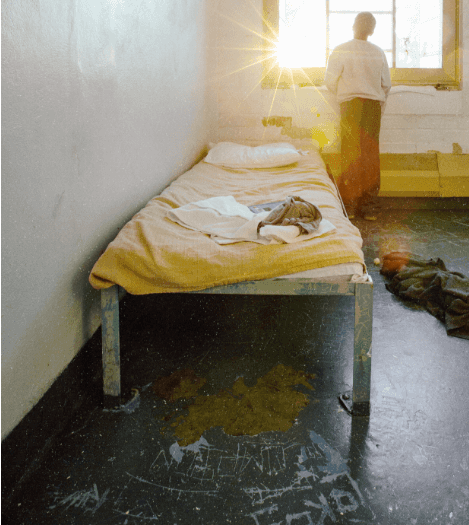Report - Protecting Children's Rights in Justice System by State
Report from Human Rights for Kids examines state-by-state metrics behind the shameful mass incarceration of children in the United States

"There can be no keener revelation of a society’s soul than the way in which it treats its children." - Nelson Mandela
A brief increase in crimes committed by children between 1987-1994 led to a concerted effort to dehumanize children of color in order to violate their human rights. The press fed the narrative by depicting ‘teen killers’ and ‘young thugs’ primarily as children of color. Children of color appeared in crime news significantly more than white youth. This narrative led to a wave of draconian policies that were rooted, in part, by racism. As a result, over a six-year period beginning in 1993, the number of children housed in adult jails more than doubled.
Arrests of youth (ages 0–17) peaked in 1996 at nearly 2.7 million. The Department of Justice reports that arrests of youth have since declined; the number in 2016 was 68% less than the 1996 peak. In comparison, arrests of adults fell 20% during the same period. Yet there are too many youth are still locked up, and racial disparities among committed youth have widened. This data shows that youth of color are much more likely to be incarcerated despite the fact that they commit roughly the same level of juvenile crime as white youth.
According to the Haywood Burns Institute, African-American youth are 5 times more likely to be incarcerated than white youth, Native American youth are 3.2 times more likely to be incarcerated than white youth, and Latino youth are 2 times more likely to be incarcerated than white youth, and in some individual states, this disparity is profoundly higher. Moreover, research from the National Council on Crime and Delinquency shows that disparities are increasing in some jurisdictions.
The severe harms that children face when placed in adult jails and prisons have been well-documented. They include physical and sexual violence, solitary confinement, lack of mental health treatment, lack of educational programming, and isolation from family. These forms of child abuse are human rights abuses and frequently follow children as they age and become adults in prison.
At current, approximately 32,359 individuals in our prisons are incarcerated for crimes they committed as children. Some were so young they were still subject to truancy laws, and an astonishing number weren’t even teenagers. They comprise a full 3.1% of the United States’ overall prison population; the equivalent of an entire prison full of children in every state in the country. We have failed these children on a national level. But children in some states fare far worse than in others.
This exhaustive report from Human Rights for Kids, "Crimes Against Humanity: The Mass Incarceration of Children in the United States," breaks down the progress each of the 50 states is making toward executing policies that protect children's rights in the criminal justice system and overall efforts toward juvenile decarceration. The report finds unearthed evidence suggesting that the United States’ treatment of children as adults in the criminal justice system is not only a violation of international law, but may also constitute a crime against humanity under Article 7 of the Rome Statute of the International Criminal Court, and recommends that an investigation by the International Community, led by the United Nations, may be warranted.
Human Rights for Kids is a a non-profit organization dedicated to the promotion and protection of human rights for children, working to investigate abuses involving children perpetrated around the world by government entities, private companies and individuals. You can download the report "Crimes Against Humanity: The Mass Incarceration of Children in the United States," from their website.










